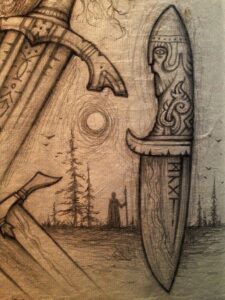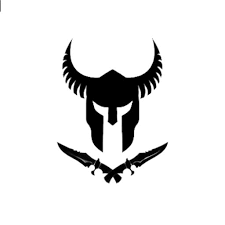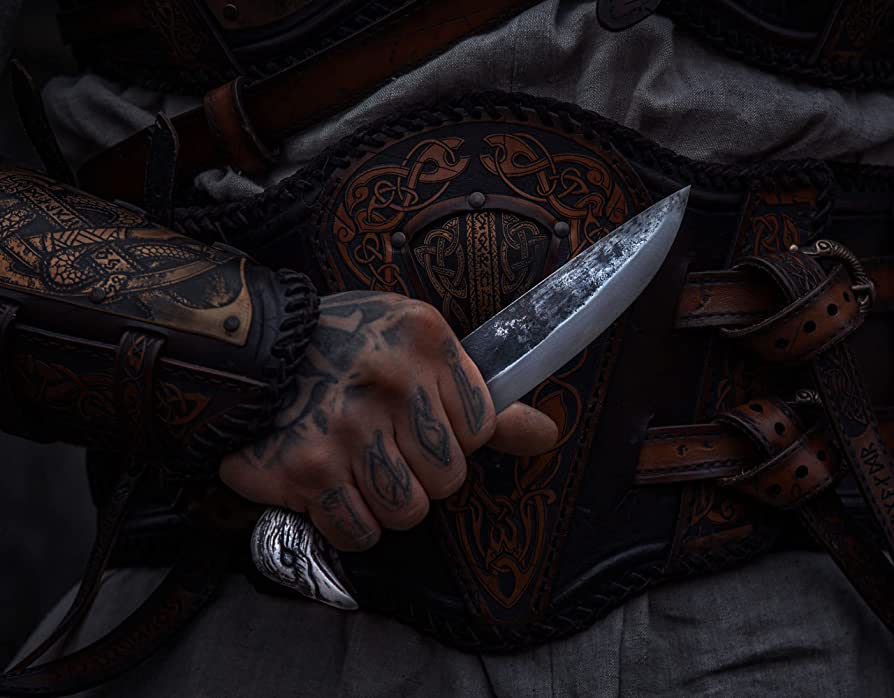Giving a knife among the Vikings was a deeply symbolic gesture in their culture. Knives were not only essential tools in the everyday life of the Vikings, but they also held significant social, political, and spiritual meanings.
Summary
ToggleThe Significance of Knives in Viking Daily Life

Among the Vikings, giving a knife was considered a highly symbolic and significant gesture. Knives were viewed as important tools for daily life as well as defensive weapons. Giving a knife to someone meant that you trusted that person and believed in their ability to wield it with honor. It was typically a gift to celebrate a significant event or to mark an alliance.
Knives were also symbols of Viking culture and were often adorned with significant symbolic motifs such as animals, runes, and Viking gods. Therefore, giving a knife was a very meaningful gesture and reflected the value the giver placed on the recipient.
In conclusion, giving a knife among the Vikings was a highly significant symbolic gesture that reflected trust, honor, and the cultural importance of knives in Viking society.
Knives, an important tool in the daily life of the Vikings
Knives were considered essential tools in the daily life of the Vikings. They were used for a variety of tasks, including hunting, fishing, cooking, and crafting goods. Additionally, knives served as defensive weapons and were often carried for protection.
Crafted from various metals such as iron, steel, and bronze, knives were typically adorned with symbolic ornaments such as motifs of Viking gods, runes, and animals. They were regarded as valuable possessions and were often passed down through generations.
Giving a knife : demonstrating trust and honor
Giving a knife among the Vikings was considered a gesture of trust and honor. By presenting a knife to someone, you demonstrated your trust in that person and your belief in their ability to wield it with honor. Knives were regarded as potent weapons, and offering one indicated that you held the recipient in high esteem and trust.
In addition to being essential tools for daily life, knives were also viewed as symbols of Viking culture. Giving a knife adorned with significant symbolic motifs such as animals, runes, and Viking gods showed respect for the beliefs and values of Viking society.

Knives, gifts to celebrate significant events
Knives were often used to celebrate significant events among the Vikings. Offering a knife could be a way to commemorate a wedding, a birth, a rite of passage, or a victory on the battlefield.
Knives were considered valuable items, and giving one to celebrate an important event demonstrated the significance you placed on both the occasion and the person receiving it. Knives adorned with significant symbols such as runes, Viking gods, or animal motifs were frequently chosen to mark particularly important events.
Knives symbolized an alliance among the Vikings
Knives were also used to mark an alliance among the Vikings. Offering a knife could formalize a political, trade, or military alliance. Knives were seen as symbols of trust and honor, and giving a knife to mark an alliance demonstrated the trust you had in the other party and your commitment to honoring the alliance.

Why give a coin when offering a knife ?
It’s possible that the Vikings gave a coin alongside a knife to reinforce the symbolic meaning of the gift. Coins were considered symbols of wealth and prosperity, and giving a coin along with a knife could enhance the significance of the gift by showing that you were prosperous and able to make such a gift.
It’s also possible that the coin was given to cover the costs of crafting the knife and to show appreciation towards the knife and its maker. Giving a coin could additionally serve as a token of goodwill and strengthen the bonds between the individuals involved in the transaction.
FAQ
Giving a knife in many cultures can symbolize friendship, alliance, or even acknowledgment. However, it can also be seen as a bad omen in some cultures, associated with the superstition that it can “cut” ties between individuals. It’s often avoided as it can be interpreted as foretelling conflicts or separations.
Knives are sometimes given at special times in life, such as weddings or housewarmings. In some cultures, giving a knife can symbolize a form of friendship or partnership, but it can also be avoided to steer clear of any negative connotations.
Giving money when presenting a knife is a tradition aimed at counteracting the superstition or negative symbolism associated with this gift. This is often done to prevent the knife from “cutting” ties between individuals. By giving money in return, the gift is transformed into a commercial transaction, thus nullifying the superstition associated with giving a knife as a gift.
In some traditions, giving a knife can be associated with the superstition that it might “cut” ties between people. To counter this negative symbolism, it is sometimes recommended that the person receiving the knife gives back a symbolic coin, thus transforming the gift into a “purchase” rather than a “gift”.
Conclusion
Knives were highly significant for the Vikings, seen as symbols of honor and trust. Offering a knife meant demonstrating trust in the recipient. Knives were also used to mark important alliances and celebrate significant events. Sometimes, a token was given alongside the knife to enhance the symbolic meaning of the gift and show appreciation towards the knife and its maker. In the Vikings’ daily life, knives were considered indispensable tools.
Hopefully, this article has shed light on the significance of giving a knife among the Vikings and the importance knives held in their daily lives.

